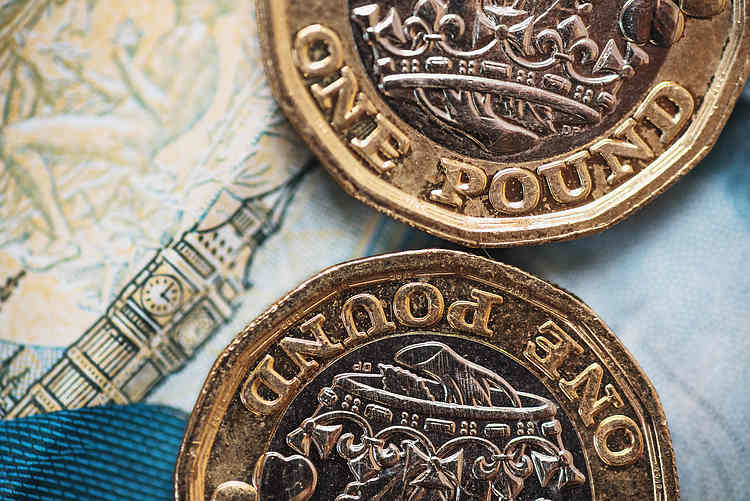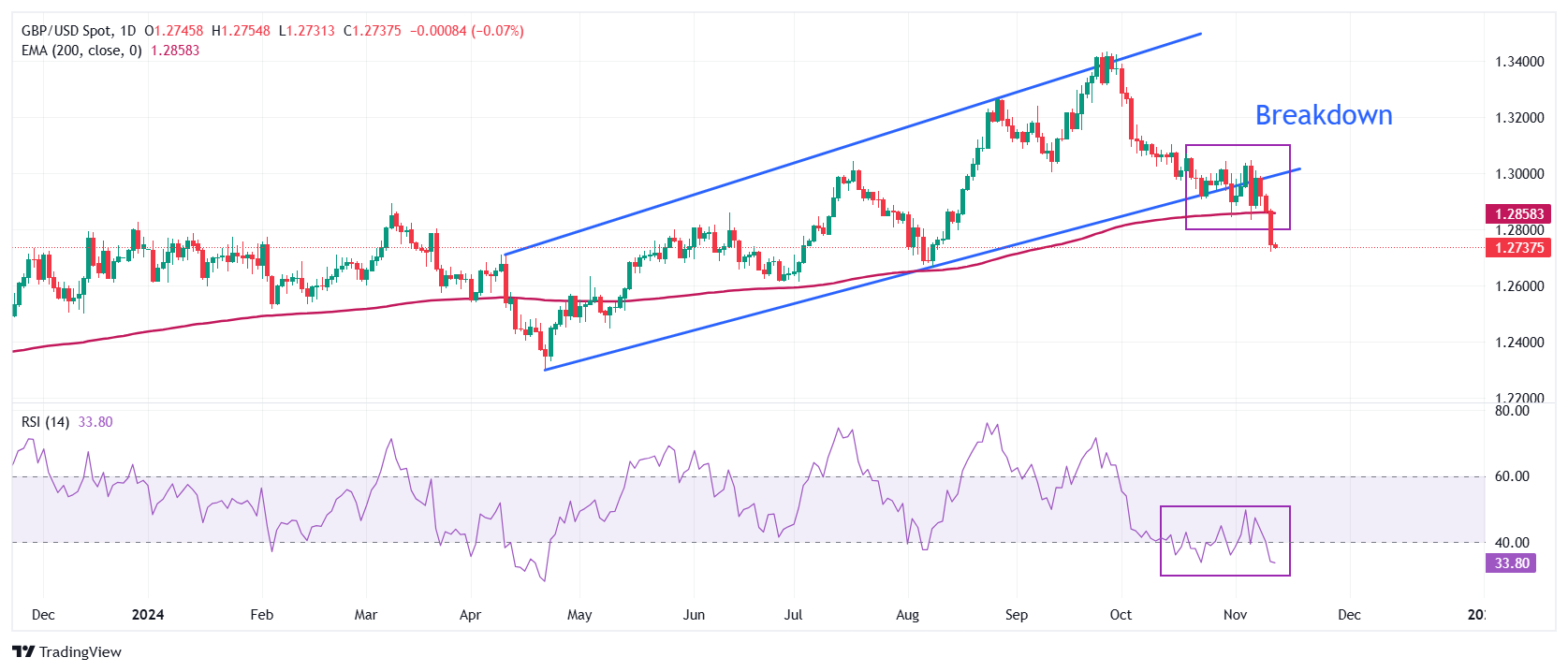- The Pound Sterling trades with caution near a three-month low of around 1.2750 against the US Dollar as investors brace for US inflation data for October.
- Market expectations for the Fed to cut interest rates in December have slightly diminished.
- Investors await BoE Mann’s speech and a slew of Fed speakers for fresh interest rate guidance.
The Pound Sterling (GBP) trades cautiously near a fresh three-month low around 1.2750 against the US Dollar (USD) in Wednesday’s North American session. The GBP/USD pair faces pressure with investors focusing on the United States (US) Consumer Price Index (CPI) data for October, which will be published at 13:30 GMT. The US Dollar Index (DXY), which gauges the Greenback’s value against six major currencies, clings to gains at around 106.00, the highest level seen in more than six months.
Economists expect the headline inflation to accelerate to 2.6% from 2.4% in September, with the core CPI – which excludes volatile food and energy prices – rising steadily by 3.3% year-on-year. The monthly headline and core CPI are estimated to have risen steadily by 0.2% and 0.3%, respectively.
The inflation data isn’t expected to significantly impact market expectations for the Federal Reserve’s (Fed) likely monetary policy action in the December meeting unless there is a sharp divergence from consensus. Recent commentary from a majority of Fed officials indicated that they are confident about the disinflation trend remaining on track to the bank’s target of 2%.
Still, Minneapolis Federal Reserve Bank President Neel Kashkari struck a cautious note on Tuesday at a Yahoo! Finance event. “If inflation surprises to the upside before December, that might give us pause,” he said. Kashkari added that the monetary policy is ”modestly restrictive right now,” and he expects economic growth to persist. When asked about the impact of President-elect Donald Trump’s policies on the inflation outlook, Kashkari said: “The tariff is a one-time increase in prices, that’s not inflationary in itself.”
President-elect Donald Trump has vowed to raise import tariffs by 10% and lower corporate taxes in his election campaign.
According to the CME FedWatch tool, the probability for the Fed to reduce interest rates by 25 basis points (bps) to 4.25%-4.50% in December is 62%, down from 70% a week ago.
Daily digest market movers: Pound Sterling faces pressure against its major peers
- The Pound Sterling stays on backfoot in European trading hours on Wednesday after a sharp sell-off on Tuesday. The British currency tumbled after the United Kingdom (UK) labor market data for three months ending September showed that the Unemployment Rate rose more than expected to 4.3%. Fresh payrolls also came in lower at 219K against the 373K jobs added in three months ending August.
- “The higher (UK) unemployment rate could see the market start to price in a higher chance of a rate cut from the Bank of England (BoE) next month,” according to analysts at XTB.
- However, not all components of the labor market data were unfavorable for the Pound Sterling as Average Earnings data, a key measure of wage growth that drives consumer spending, came in higher than expected.
- After the employment data release, the comments from BoE Chief Economist Huw Pill at the conference of Swiss Bank UBS suggested that he is slightly concerned over inflationary pressures remaining persistent. “As we saw in the labour market data that was released this morning, pay growth remains quite sticky at elevated levels and levels that – given the outlook for productivity growth in the UK – are hard to reconcile with the UK inflation target,” Pill said, Reuters reported.
- Meanwhile, BoE external policy member Catherine Mann is also worried about upside risks to inflation remaining persistent. Mann said in a panel discussion organized by BNP Paribas that energy prices are more likely to rise than fall and highlighted inflation in the service sector as “pretty sticky,” Bloomberg reported. When asked about the impact of Trump’s tariffs on the economy, Mann said, “I will want to focus on how much UK financial conditions are affected by BoE’s action vs. moves in the US.”
Technical Analysis: Pound Sterling sees more downside toward 1.2660
The Pound Sterling wobbles above the three-month low near 1.2700 against the US Dollar. The GBP/USD weakened sharply on Tuesday, breaking below the 200-day Exponential Moving Average (EMA), which trades around 1.2860. The overall trend of the Cable turned broadly negative after price action fell below the lower boundary of the rising channel, which set a bearish reversal.
A bearish momentum has kicked in with the 14-day Relative Strength Index (RSI) falling below 40.00.
Looking down, the August low at 1.2665 will be a major cushion for Pound Sterling bulls. On the upside, the Cable will face resistance near the psychological figure of 1.3000.
Economic Indicator
ILO Unemployment Rate (3M)
The ILO Unemployment Rate released by the UK Office for National Statistics is the number of unemployed workers divided by the total civilian labor force. It is a leading indicator for the UK Economy. If the rate goes up, it indicates a lack of expansion within the UK labor market. As a result, a rise leads to a weakening of the UK economy. Generally, a decrease of the figure is seen as bullish for the Pound Sterling (GBP), while an increase is seen as bearish.

